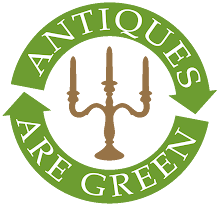 I love a good fair, especially those run by Specialist Glass Fairs. The dynamic duo behind the rapidly expanding portfolio are delighted to announce an all-new fair to be held at Dulwich College in South London on Sunday 28th March. To be held in the beautiful and aptly Modernist style Christison Hall from 10.30am until 4pm, the fair sees the addition of ceramics dealers to the usual stable of fabulous glass dealers. Visitors will be able to browse all types of decorative and collectable glass and ceramics from across the centuries; from Powell to Poole, Moorcroft to Murray and faience to Fat Lava.
I love a good fair, especially those run by Specialist Glass Fairs. The dynamic duo behind the rapidly expanding portfolio are delighted to announce an all-new fair to be held at Dulwich College in South London on Sunday 28th March. To be held in the beautiful and aptly Modernist style Christison Hall from 10.30am until 4pm, the fair sees the addition of ceramics dealers to the usual stable of fabulous glass dealers. Visitors will be able to browse all types of decorative and collectable glass and ceramics from across the centuries; from Powell to Poole, Moorcroft to Murray and faience to Fat Lava. Specialists in 18th century drinking glasses, stylish and hotly desirable Scandinavian and Italian pieces, antique continental glass such as Gallé and Lalique, and British art glass will exhibit alongside trusted quality ceramics experts and contemporary glass and ceramics makers. Amongst them, these two stunning pieces will be displayed. The first is a rare 1960s Poole Pottery 'Tree of Life' charger by Tony Morris, available from Mark Hitchings, and the second is an Arts and Crafts candelabra in 'Straw Opal' glass by James Powell and Sons, c1890, which will be available from Nigel Benson.
Specialists in 18th century drinking glasses, stylish and hotly desirable Scandinavian and Italian pieces, antique continental glass such as Gallé and Lalique, and British art glass will exhibit alongside trusted quality ceramics experts and contemporary glass and ceramics makers. Amongst them, these two stunning pieces will be displayed. The first is a rare 1960s Poole Pottery 'Tree of Life' charger by Tony Morris, available from Mark Hitchings, and the second is an Arts and Crafts candelabra in 'Straw Opal' glass by James Powell and Sons, c1890, which will be available from Nigel Benson.I'll also be there signing a full range of my books and the new edition of the Miller's Collectables Price Guide and Handbook 2010-2011, together with a limited quantity of the book that accompanies my new BBC2 TV series, 'Cracking Antiques'. For more information, check out the fair's website at www.gcse21.com. Make a note in your diary, and I hope to see you there!















.png)